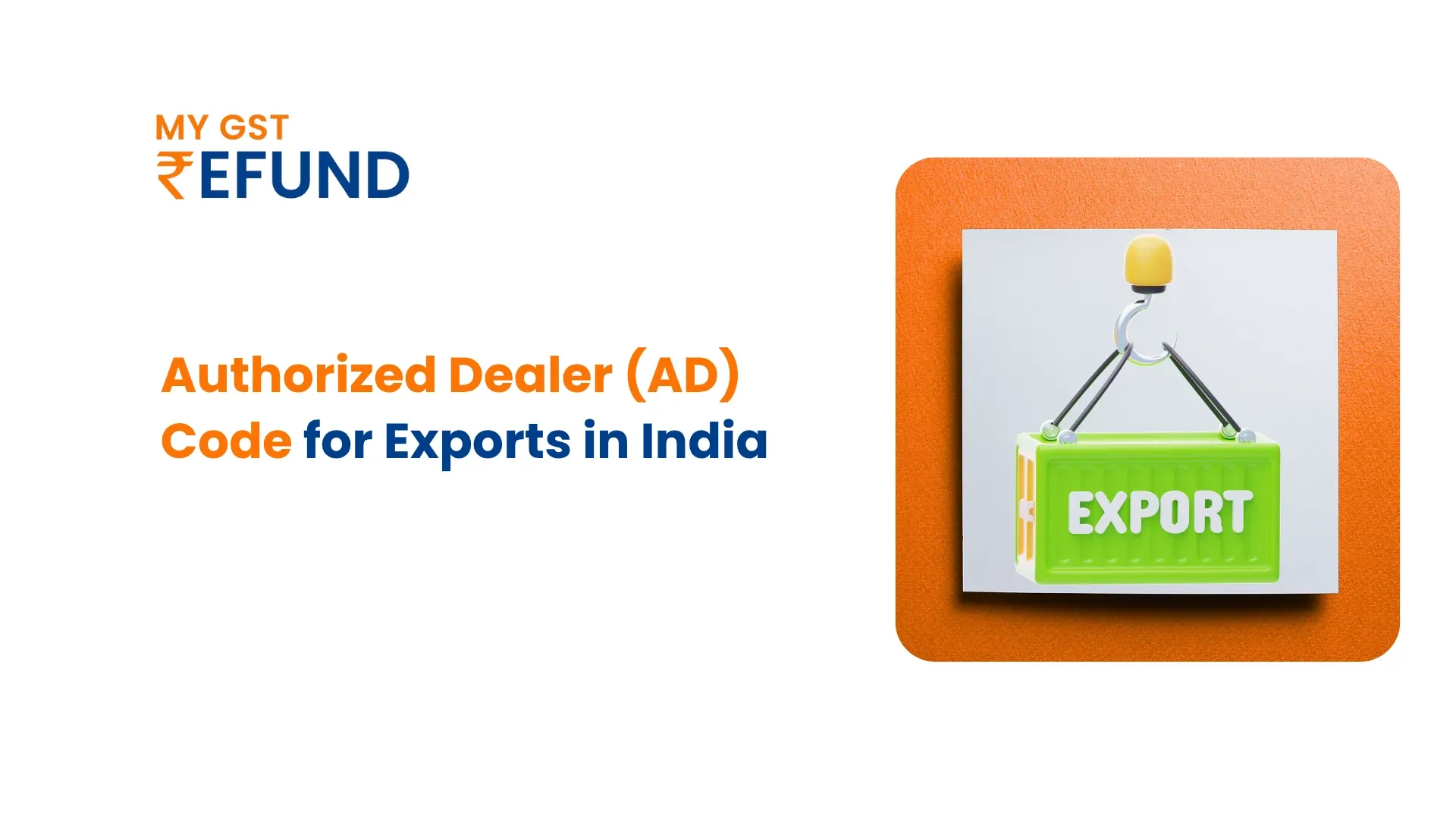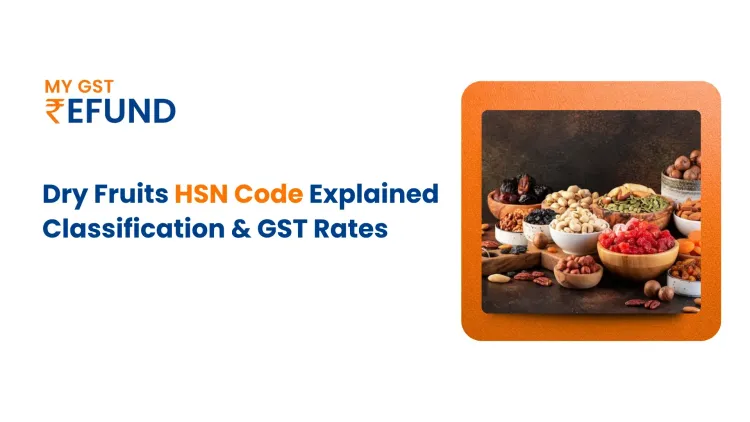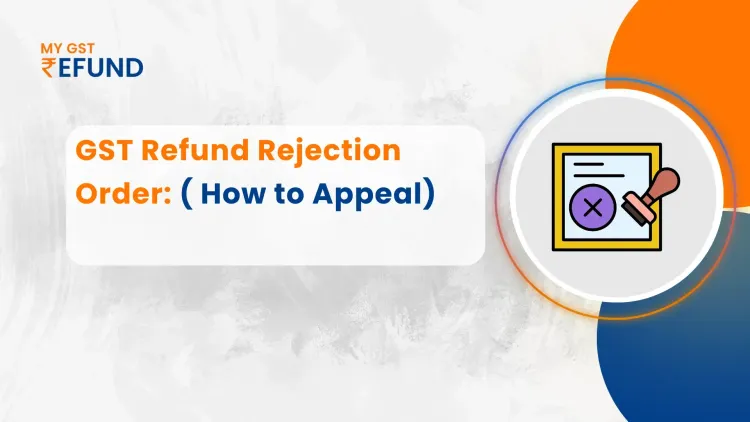Authorized Dealer (AD) Code for Exports from India
Every minute detail is accounted for in international trade, whether it is the export documents or the manner in which they comply with government regulations. One of the critical needs of the exporters in India is the Authorized Dealer (AD) Code. The exporters are unable to pass shipping bills or accept payment from foreign buyers by using Indian banks without this code. The meaning of AD Code, its necessity, and the way in which it can be obtained must be known to every person involved in export business.
This blog explains all about the AD Code, its significance, the procedure of its application, and documentation, and therefore, makes sure that your export activities run smoothly and that you do not experience delays in terms of customs clearance or actualizing payments.
If you are an exporter, you may be eligible for an Export GST Refund. Connect with MYGST Refund today. “We are India’s #1 automated GST Refund platform, for expert guidance and end-to-end support”. Export compliance is made easy through our platform, and faster refunds are ensured.
What is an Authorized Dealer (AD) Code?
Authorized Dealer (AD) Code is a 14-digit numerical code that is given by a bank that is authorized by the Reserve Bank of India (RBI) to buy and sell foreign exchange. It connects the bank account of an exporter and his Importer-Exporter Code (IEC) at the port where export goods are processed.
It simply serves as an intermediary between the exporter, the customs department, and the bank in order to transact foreign exchange transactions. All exporters have to enrol their AD Code in all the customs ports to which they intend to export goods or services.
As an illustration, when an exporter is trading via the Nhava Sheva Port (Mumbai) and Chennai Port, he or she has to register the AD Code of each port.
What is a Bank AD Code?
The bank issues a Bank AD Code in which the exporter maintains the business account. This unique code is given by the bank, which has been an Authorized Dealer of RBI and to identify itself in any kind of foreign exchange transaction.
Banks issuing AD Codes are divided into dissimilar groups - mostly Authorized Dealer Category I banks, which are allowed to transact any type of foreign exchange dealing with exports, imports, and remittances. These are SBI, HDFC Bank, ICICI Bank, and Axis Bank.
The AD Code letter by the bank has ensured that the exporter has a bank account in association with a foreign exchange dealer, which is approved by the RBI to carry out international dealings.
Significance of AD Code in Exports
Not just a formal banking requirement, an AD Code is actually an obligatory step in compliance with Indian customs and regulations of the RBI. Here’s why it matters:
Compulsory for Export Customs Clearance: Exporters cannot create a Shipping Bill without an AD Code registration at the port, which is necessary for clearing goods through customs.
Allows the Reception of export payments: It makes sure that the foreign currency transactions acquired by overseas purchasers are properly directed to the bank account of the exporter.
Helps Track Export Proceeds: Under the FEMA regulations, customs and the RBI utilize the AD Code to monitor the export proceeds and ensure that the payments are received within the prescribed time frame of the FEMA regulations.
Secures Transparency and Compliance: The AD Code registration enables the regulatory bodies to ensure transparency in the trade transactions and trace the inflow of foreign currency in India.
Format of an AD Code
An AD Code is a number given by the bank that has 14 digits.
This is what it looks like:
- The first four digits are the bank code (given by the Reserve Bank of India).
- The following four digits are the bank branch code.
- The last six digits are the bank branch's unique number.
Example:
AD Code - 12345678901234
1234 - Bank Code (issued by RBI)
5678 - Bank Branch Code
901234 - Unique number of the branch.
This ensures that every exporter's foreign exchange transactions are tracked to the branch of their bank.
AD Code Bank Letter Format
Your bank issues you with an official AD Code Letter to register your AD Code at the customs port.
The letter usually consists of the following information:
- Name of the bank and its address of the branch.
- Name and IEC (Importer Exporter Code) of the exporter.
- Bank account number of the exporter.
- The 14-digit AD Code
- Signature and seal of the authorized bank official.
This letter should be printed on the official letterhead of the bank and then physically or electronically delivered by means of the ICEGATE portal to be verified.
Example of AD Code in Action
Let's take an example:
- ABC Textiles Pvt. Ltd. in Surat sells cotton fabrics to European buyers.
- A HDFC Bank, Surat branch, has its export account with the company.
- The bank assigns an AD Code, which is 14 digits in length, and issues an AD Code Letter.
- ABC Textiles clears at the Nhava Sheva Port (JNPT) under ICEGATE.
- As the goods are shipped by ABC Textiles, their AD Code is presented on the shipping bill.
Once the shipment has been successfully done, buyers paying via foreign currency will be credited to the HDFC account of ABC Textiles associated with this AD Code.
This guarantees smooth customs clearance, tracking, and payment realisation.
Benefits of Having an AD Code
1. Makes Exportation Easy: Makes sure that there are no customs delays or hold-ups in your shipments.
2. Facilitates Foreign Exchange Transactions: Enables the legal receipt of export proceeds in foreign currency.
3. GST Refunds Qualification: GST filings on shipping bills should be linked with the correct AD Code registration to be refunded in a faster manner.
4. Streamlines Compliance: Eases export dealings with RBI, DGFT, and Customs records to track them without difficulty.
5. Supports Credibility: Shows the foreign trade compliance and professionalism of your business.
Documents needed to get an AD Code
To apply for an AD Code, you will have to provide the following documents to your bank:
- Copy of your certificate of Importer-Exporter Code (IEC)
- PAN Card of the business
- Bank account details of the exporter
- GST Registration Certificate.
- Export license (if required)
- Documents of incorporation of the company (Partnership Deed, MOA/AOA, etc.).
- Address evidence of the business.
- Cancelled cheque of the bank account
When checked, the bank issues an AD Code letter, which should be registered with the customs via ICEGATE.
How to obtain an AD code: Step-by-Step Process.
1. Open a Current Account with an Authorised Dealer bank (Category-I) that deals in foreign exchange.
2. Gather Required Paperwork, IEC, GST certificate, PAN, etc.
3. Send Application to Your Bank requesting an AD Code on its letterhead.
4. Upon verification, receive the 14-Digit AD Code Letter of the bank.
5. Register AD Code in the ICEGATE Portal. Visit https://www.icegate.gov.in/, log in to your account with your username and password, and upload the AD Code letter.
6. Checking by the Customs Officer: The AD Code will be checked and approved by the customs officer.
7. Start Exporting: Once the approvals are given, you can file shipping bills and start exporting using the registered port.
Conclusion
Exporters in India cannot proceed without an Authorized Dealer (AD) Code. It ensures that your shipments are cleared smoothly through customs, your foreign exchange transactions are legitimate, and your export proceeds are kept in check. It is not just a formality to get your AD Code registered with customs, but this is the basis of a transparent and smooth export business.
Knowing the process, documentation, and significance of the AD Code, exporters can save time, eliminate delays in shipping, and ensure complete compliance with the regulations, which is necessary for international expansion.
Frequently Asked Questions
1. Where can I find the Authorized Dealer Code?
You can find your AD Code in the letter the bank provided you. You may also contact your bank or look through the ICEGATE portal to check your registration of the AD Code.
2. What is an Authorized Dealer (AD) Code?
It is a 14-digit code issued by a bank authorized by the RBI, which associates your export-related transactions with customs clearance and receiving money through foreign currency.
3. Why do I need an AD Code for exports?
The AD Code is required to generate shipping bills, receive export payments, and claim GST or IGST refunds.
4. Who Issues AD Code?
Your AD Code is issued by the bank where you maintain your current account, which has been authorized by the Reserve Bank of India for foreign currency exchange transactions.
5. What documents do I require to get an AD Code?
You require an IEC, PAN, GST certificate, bank details, proof of address, and incorporation documents.
6. How can I apply for the AD Code?
You need to make a written request to your bank with all the documents. Following receiving the AD code letter, you need to register your AD code on the ICEGATE portal before you can start exporting.
Related Posts






